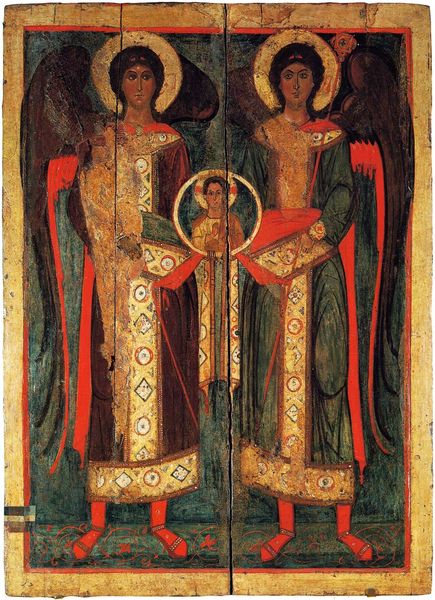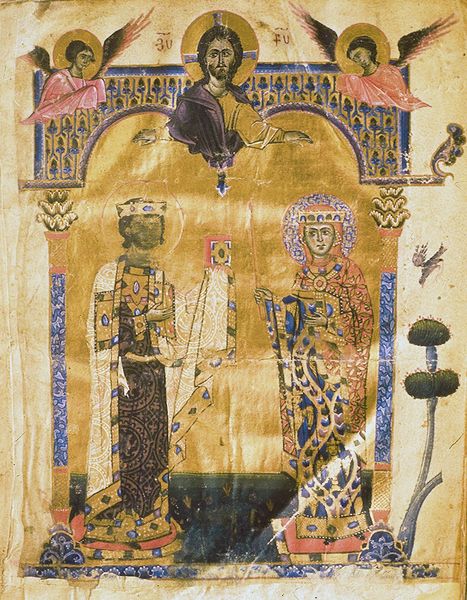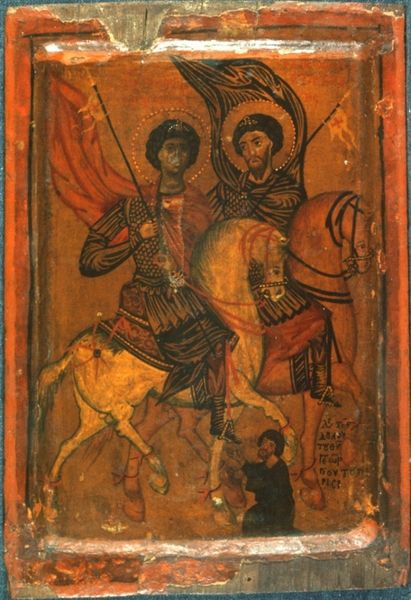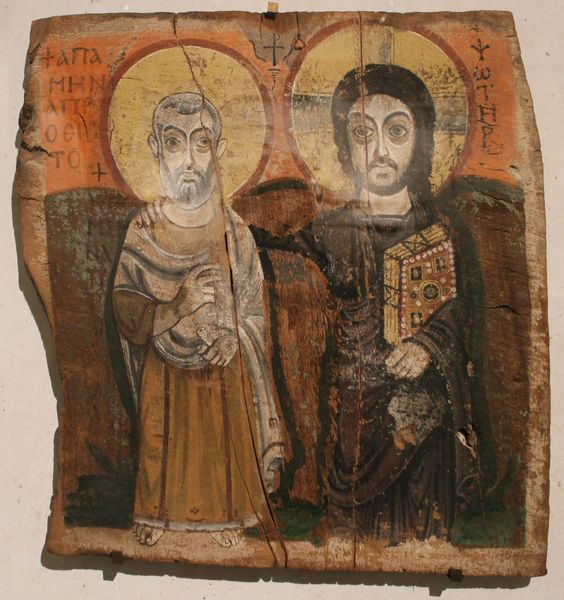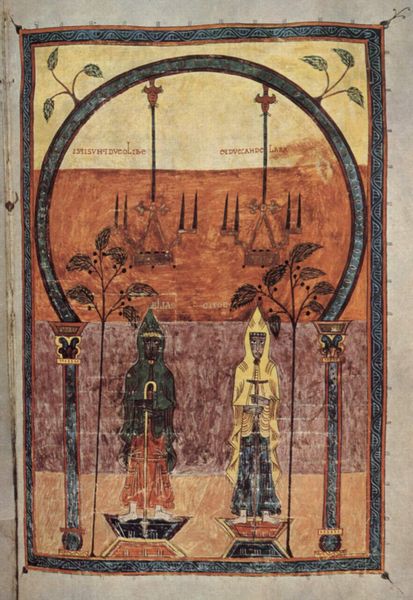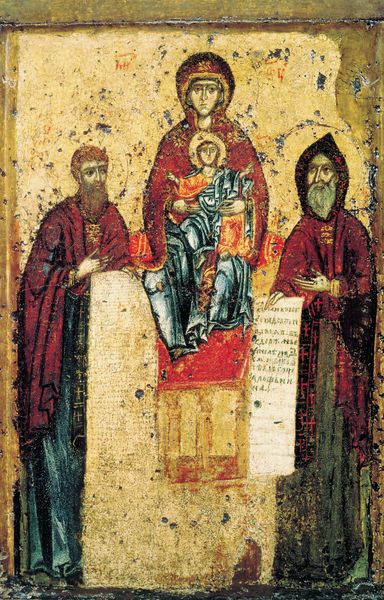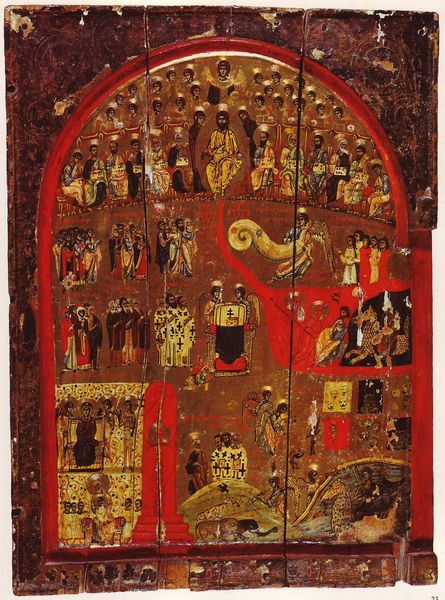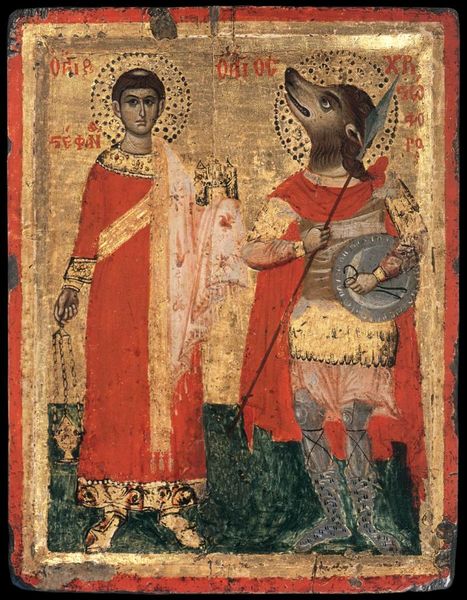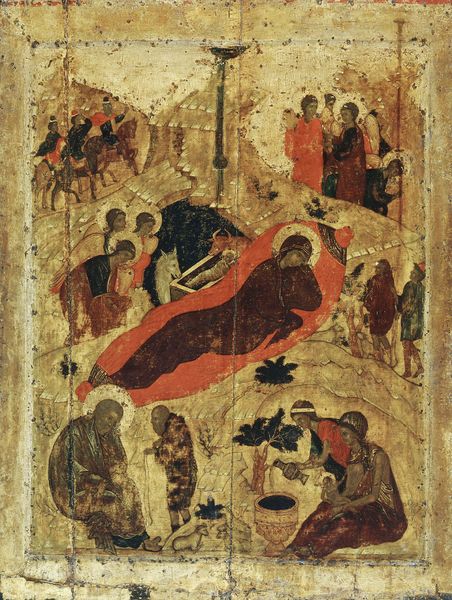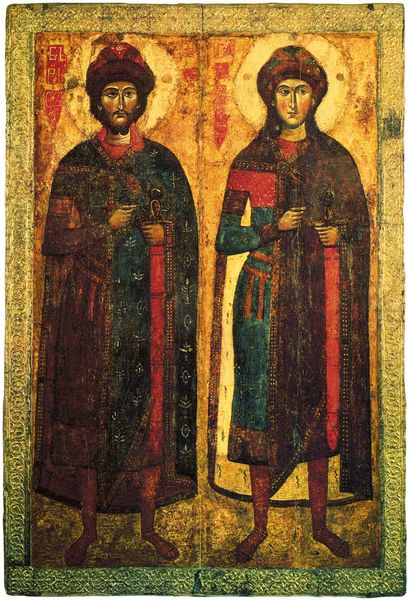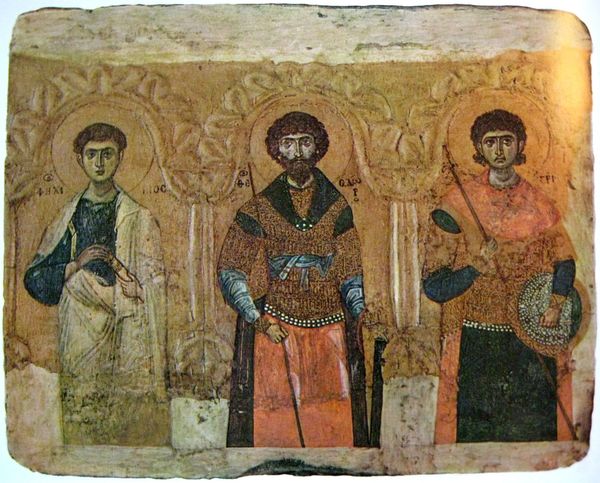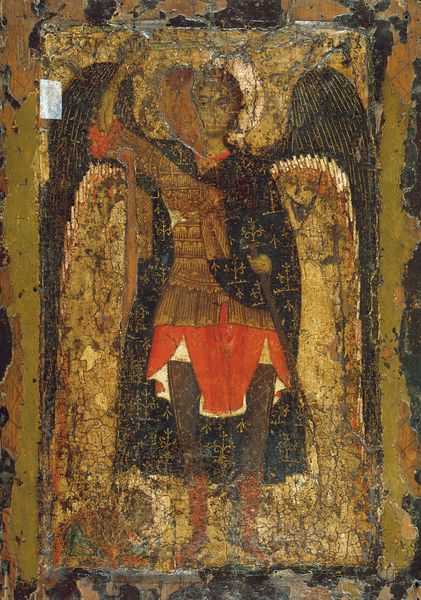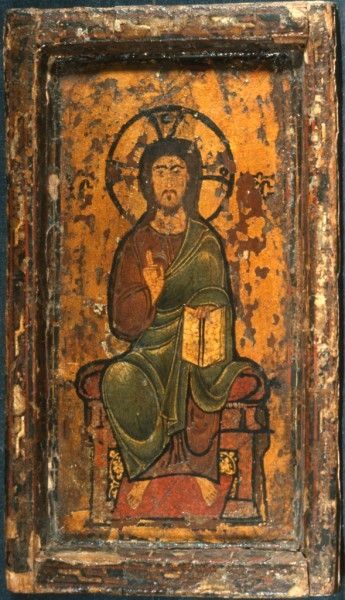
The Warrior-saints Theodor of Amasea and George Mounted, Conquering Their Enemies 1000
0:00
0:00
orthodoxicons
Saint Catherine's Monastery, Mount Sinai, Egypt
tempera, painting, wood
#
byzantine-art
#
medieval
#
narrative-art
#
tempera
#
painting
#
figuration
#
oil painting
#
wood
#
history-painting
Copyright: Orthodox Icons,Fair Use
Editor: Here we have a Byzantine icon from around the year 1000, titled "The Warrior-Saints Theodor of Amasea and George Mounted, Conquering Their Enemies," made with tempera on wood. I'm immediately struck by how tactile it feels, despite being behind glass, and how vibrant the colors still are. What stands out to you? Curator: Considering this piece from a materialist perspective, let's look at the tempera itself. Sourcing pigments for those vibrant reds and yellows would have been a complex undertaking, involving trade networks, skilled artisans, and a sophisticated understanding of material properties. Even the wood panel represents access to resources and skilled labor for its preparation and preservation. Who do you imagine commissioned this, and what does that say about Byzantine society? Editor: Knowing how laborious tempera is as a medium definitely adds a layer of appreciation to the precision of the figures. Given that it’s found at Saint Catherine's Monastery, I would guess it was commissioned by someone with connections to the church, maybe a wealthy patron or a high-ranking member of the clergy. Does that seem right? Curator: Precisely. Consider the consumption aspect; a wealthy patron displaying this piece signifies power and piety, using craftsmanship as a conduit for both religious devotion and social status. We must consider the means of production as representative of not just artistry but complex social dynamics within Byzantium. These "Warrior Saints" embody not only spiritual virtue but reflect the Church's worldly power and militaristic influence in this early period of consolidation. Editor: So the art isn't just an object of faith, but an active participant in the societal and power structures of its time? Curator: Exactly. By examining the materials, processes, and patronage, we can unpack the layers of social and economic significance embedded within the art. We begin to understand what meanings craftsmanship holds. Editor: That gives me a lot to think about – I will never see materials in the same way. Curator: Nor should you; the physical and social properties of materials have stories to tell!
Comments
No comments
Be the first to comment and join the conversation on the ultimate creative platform.
